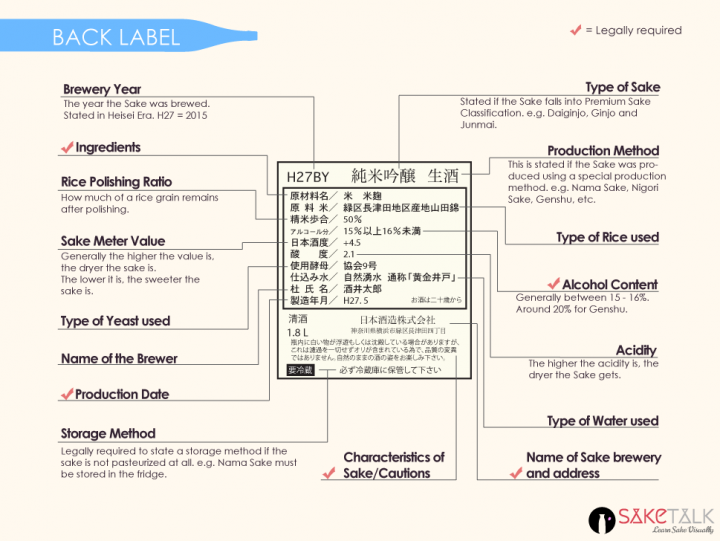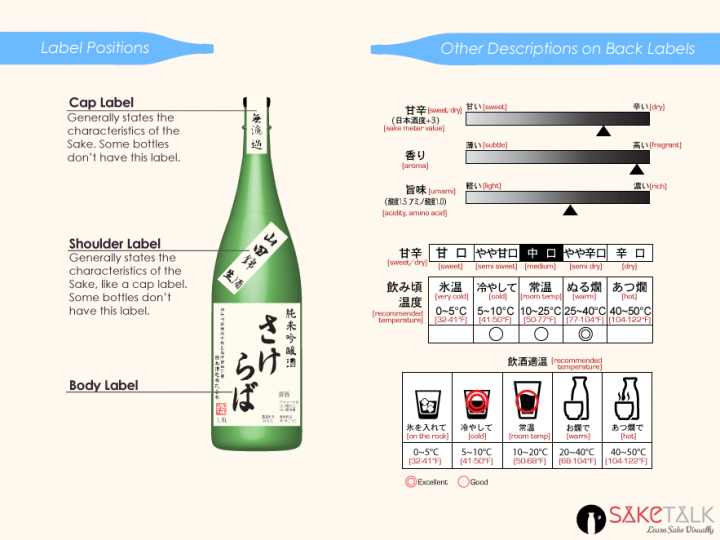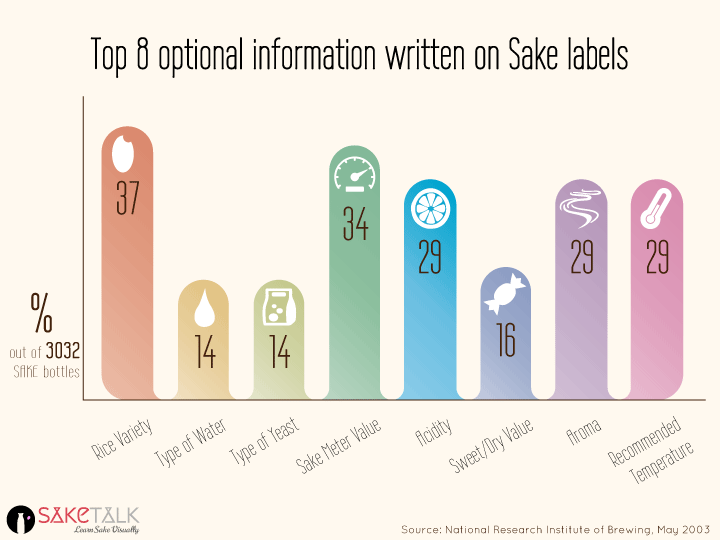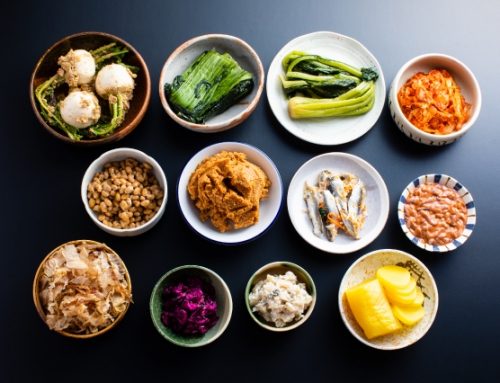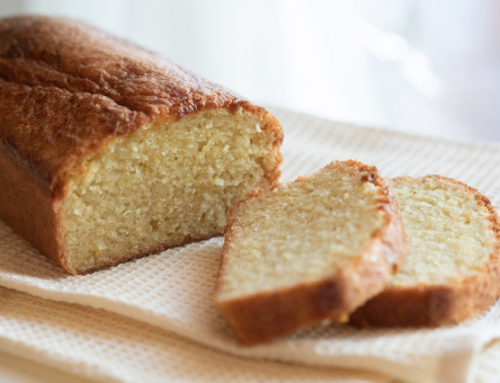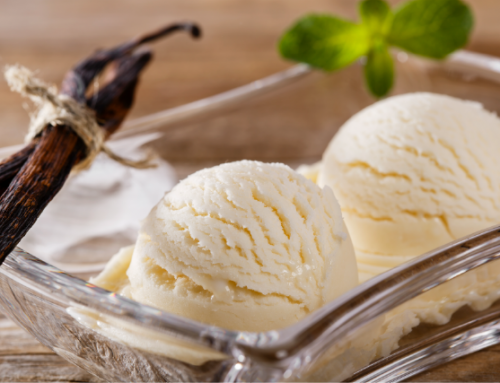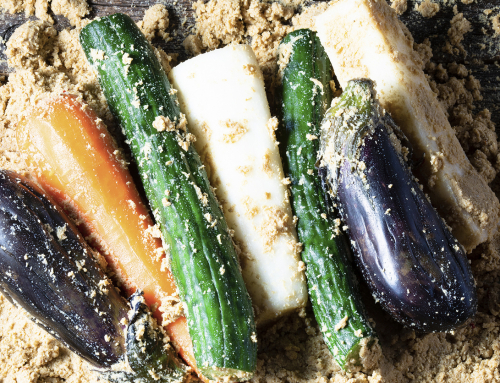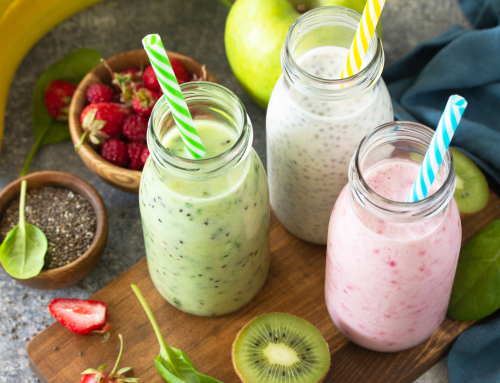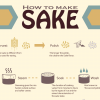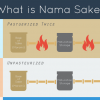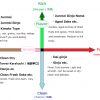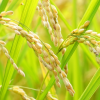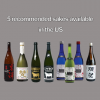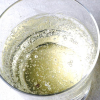Contents
Just like wine labels, Sake labels tell you an enormous amount of information. By decoding a Sake label, you can expect the aroma and flavor of the Sake.
It may be quite difficult, at first, for non-Japanese sake drinkers to read the sake label. Don’t worry. You’re going to be fine with the following ultimate guide to Sake labels!
Front Sake Label
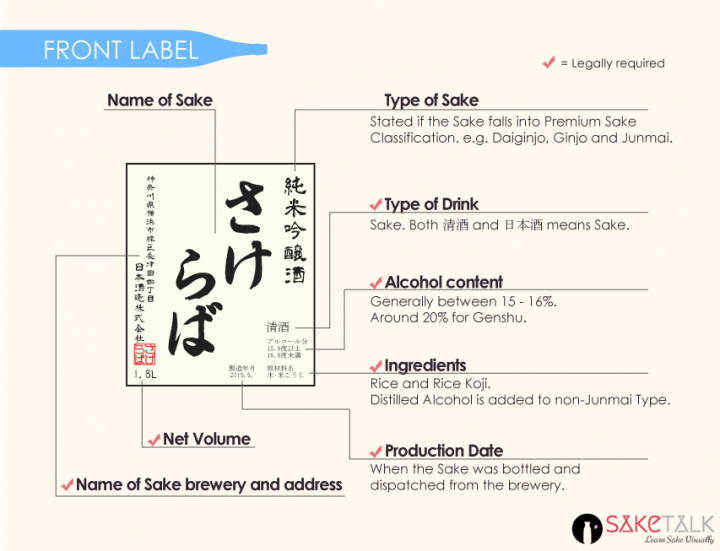
The Sake label above is a detailed one. If the bottle has a back label, its front label can be very simple – containing just the name of Sake.
1. Name of Sake
Name of Sake is usually displayed in the centre of the front label. Often written in Kanji or calligraphic writing, Sake names are ironically hard to read even for the Japanese. It’s sometimes the case that the brewery’s name is used for their Sake name.
Tweet or Facebook us with a Sake label photo if you can’t decipher its name. We would be happy to answer you!
2. Type of Sake (Premium Sake Classification)
Types of Premium Sake are:
Daiginjo, Junmai Daiginjo, Ginjo, Junmai Ginjo, Junmai, Tokubetsu Junmai, Honjozo and Tokubetsu Honjozo
The type of Premium Sake must be written on the Sake label. If not written, that Sake is Futsu-shu (cheap, non-premium Sake). Learn basic types of Sake here for more details!
3. Ingredients
Rice and rice Koji. Distilled alcohol is added for non-Junmai type. Read our Essential Guide to Sake Ingredients.
4. Production Date
This is when the Sake is dispatched from the brewery. Production date is important to know how long the Sake lasts!
Sake Back Label
1. Rice Polishing Ratio
Rice Polishing Ratio (RPR) may tell you the cleanness of the Sake flavor. The lower the value, the cleaner Sake tends to be. The higher, the more savory. Below 60% is clean. Above 60% savory (just a rough indication).
2. Sake Meter Value (SMV)
SMV may tell you the dryness of the Sake. Positive value is dryer. Negative value is sweeter. Check the acidity level (if available on the Sake label) for more accuracy.
3. Acidity
Acidity may also tell you the dryness of the Sake. Use it in conjunction with SMV. Check out our Sake Dryness Page for more info.
4. Type of Yeast
Type of yeast plays a big role in determining the Sake characteristics. Check out our Types of Yeast Page.
5. Production Method
It’s a type of Sake by special production method. The types include:
- Nama Sake
- Nigori Sake
- Genshu
- Aged Sake
We’ll make an easy guide for those special Sake types in the near future.
6. Rice Variety
Type of rice can also affect Sake characteristics. Visit Types of Rice Page for more info.
Other Descriptions on Sake Back Labels
The design and content of Sake labels can greatly vary. The following is just a few of the main other descriptions on Sake labels.
What’s written on Sake labels other than legally required ones?
Apart from legally required label info, it’s up to breweries which information to put on their Sake labels.
Which means, any optional information put on Sake labels is the one the breweries want to convey to you.
This information may effectively tell you the characteristics of Sake that the breweries have aimed at.
This statistic may indicate how important the breweries think the above information is. These are the keys to expect Sake flavors by just reading Sake labels!
Can’t read the Sake label you have? Just send us a photo of it on Facebook or Twitter!
Common Sake Label Words
Premium Sake Classification
大吟醸酒 Daiginjo Shu : Super premium grade of Sake
吟醸酒 Ginjo Shu : Premium grade of Sake
本醸造 Honjozo Shu : Clean Sake grade. Distilled alcohol added. Rice Polishing Ration less than 70%.
純米大吟醸酒 Junmai Daiginjo Shu : Super premium grade of Sake. No distilled alcohol added.
純米吟醸酒 Junmai Ginjo Shu : Premium grade of Sake. No distilled alcohol added.
純米酒 Junmai Shu : Savory Sake grade with no distilled alcohol. Rice Polishing Ratio unspecified.
特別純米酒 Tokubetsu Junmai Shu : Special Junmai Sake. Special production method.
特別本醸造酒 Tokubetsu Honjozo Shu : Special Honjozo Sake. Special production method.
Types by Production Method
あらばしり (Aarabashiri) : The first three batches of fee-flowing Sake that runs off during pressing. Read Arabashiri Page.
普通酒 (Futsu Shu) : Cheap, non-premium Sake that’s not categorized in Premium Sake Classification.
原酒 (Genshu) : Undiluted Sake. ABV is around 20%, with deeper, firmer flavor.
冷やおろし (Hiyaoroshi) : Sake that is released in autumn, not pasteurized after summer aging.
生一本 (Ki Ippon) : Junmai Sake that was brewed in a single brewery.
生酛 (Kimoto) : Sake that uses natural lactic acid bacteria. Containing a lot more assiduous labor than Yamahai.
古酒 (Koshu) : Aged Sake. Generally aged for 3+ years.
にごり酒 (Nigorizake) : Also known as Nigori Sake or Cloudy Sake. Sake that was filtered with a coarse cloth.
生酒 (Namazake) : Also known as Nama Sake or Fresh Sake. Unpasteurized Sake that needs to be stored in the fridge.
おり酒 (Orizake) : The pressed Sake is moved to aging tanks. Orizake is Sake with lees which sank to the bottom of these aging tanks. It’s a rare Sake; only little amount can be taken from an aging tank.
おりがらみ (Origarami) : Same as Orizake.
樽酒 (Taruzake) : Sake stored in a Sake barrel.
山廃 (Yamahai) : A type of Kimoto Type. Containing less assiduous labor than Kimoto.

